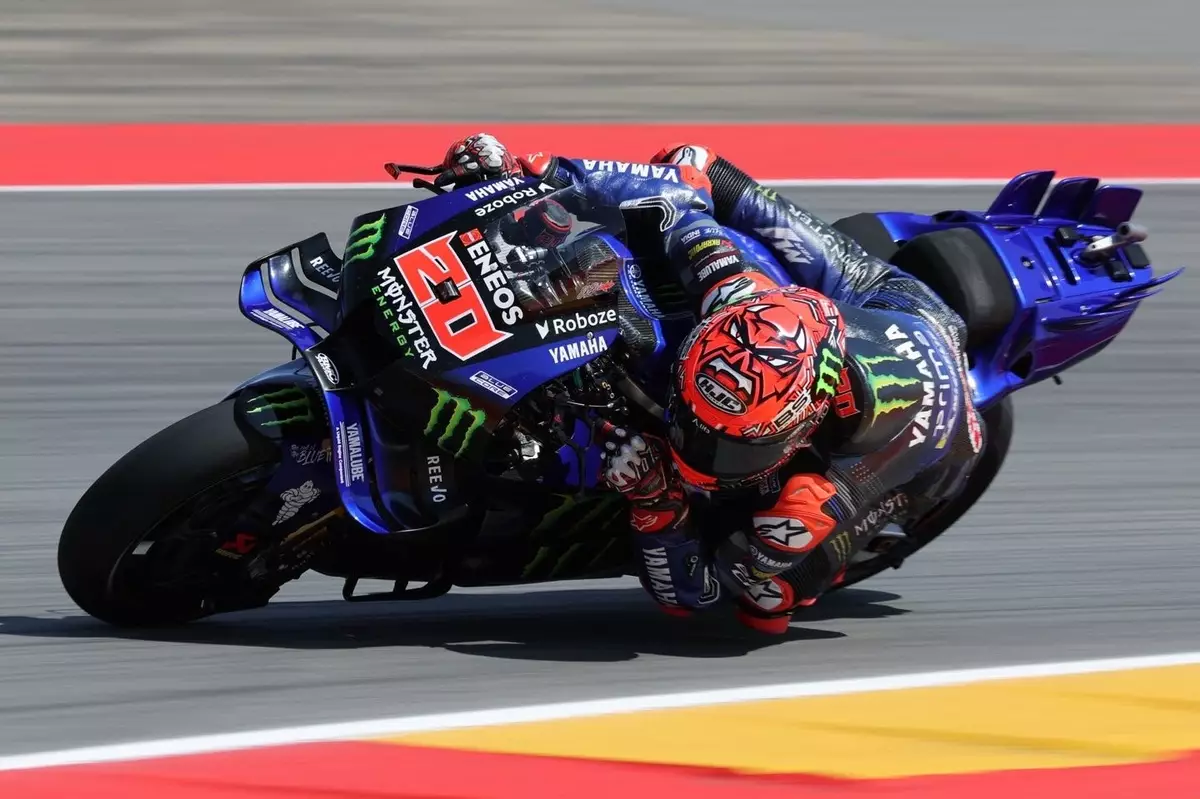The recent performance of the Yamaha YZR-M1 motorcycle at the low-grip Aragon track has exposed critical shortcomings in the machine’s grip capabilities, offering a vivid illustration of how equipment can dramatically influence race outcomes. For MotoGP riders like Fabio Quartararo, these grip deficiencies are not merely technical issues but significant roadblocks that can hinder their competitive spirit and, ultimately, their results on the track. Aragon became a test ground for Yamaha, and the results displayed an alarming susceptibility to grip-related problems, leaving Quartararo with a palpable sense of frustration.
In a sport where milliseconds can dictate the difference between first and last, the inability of Yamaha’s machine to deliver consistent power to the tarmac proved to be detrimental. Quartararo faced an uphill battle during Friday practice, with his bike seemingly conspiring against him at every corner. The motorcycle’s propensity to snap and lose traction during acceleration painted a grim picture of Yamaha’s current standing. Compounding his miseries, the data revealed that Quartararo’s Yamaha was confirmed to be among the slowest, trailing behind competitors like Brad Binder’s KTM by nearly 10 kph. Such statistical evidence not only underscores the raw performance gap but also underlines a pressing need for Yamaha to recalibrate their approach.
Frustration Meets Humor
Despite the mounting pressure and discomfort during practice, Quartararo exhibited remarkable resilience. Though visibly frustrated, he found a reason to maintain humor in the face of adversity. His quip to the media about “almost making pole position on the other side of the grid” reveals an athlete who refuses to be defeated by his equipment’s shortcomings while also highlighting the absurdity of his situation. This coping mechanism, coupled with his acknowledgment of the challenges posed by the bike, reflects a mature approach to competition. Instead of succumbing to despair, Quartararo’s lightheartedness can serve as a motivational tool, showcasing how humor can act as a buffer against the stresses of high-stakes racing.
However, joking aside, the core problems remain unsolved. Quartararo’s admission that the team had difficulties understanding the electronic glitches and grip issues speaks volumes about Yamaha’s current technological hurdles. The balance between tire changes and electronic performance is critical, and the confusion surrounding it can be paralyzing for drivers seeking consistency. When a rider finds themselves in a state of uncertainty while maneuvering through corners, it can evoke a crippling anxiety that hampers performance. Quartararo’s comments about unpredictability on track illustrate this tension, highlighting the pressing need for Yamaha to ground themselves in reality instead of hoping for a miracle fix.
The Collective Challenge
Team director Massimo Meregalli echoed Quartararo’s sentiments regarding the grip issues faced by both Quartararo and teammate Alex Rins, who also struggled to find their rhythm during Friday practice. Meregalli’s commentary about the defect of rear grip elucidates a larger problem stemmed from the psychological and tactical difficulties the riders encountered. When the machine begins to fail the rider, trials multiply. The most gifted riders, like Quartararo and Rins, might find their talents muted. Meregalli was cautious yet hopeful about the potential solutions the team could uncover; however, established patterns betray a profound lack of competitive edge.
In the highly competitive world of MotoGP, teams cannot afford to be reactive when issues arise. Yamaha’s struggles at Aragon serve as a wake-up call that leaves little room for complacency. As temperatures soared over the course of Friday practice and grip conditions worsened, Yamaha had to look beyond quick fixes and deeply analyze how temperature fluctuations impact not just grip but design success.
When one considers the essence of racing, one realizes that it’s a continuous evolution of man and machine. Both Quartararo’s humorous resilience and Meregalli’s strategic mindset reflect the dedication required to adapt and overcome challenges. Yamaha’s journey now pivots on their ability to understand and tackle the intricacies of grip and the rider-machine interface. The path ahead may be fraught with obstacles, but in the world of MotoGP, embracing challenges is as integral to winning as the races themselves.

